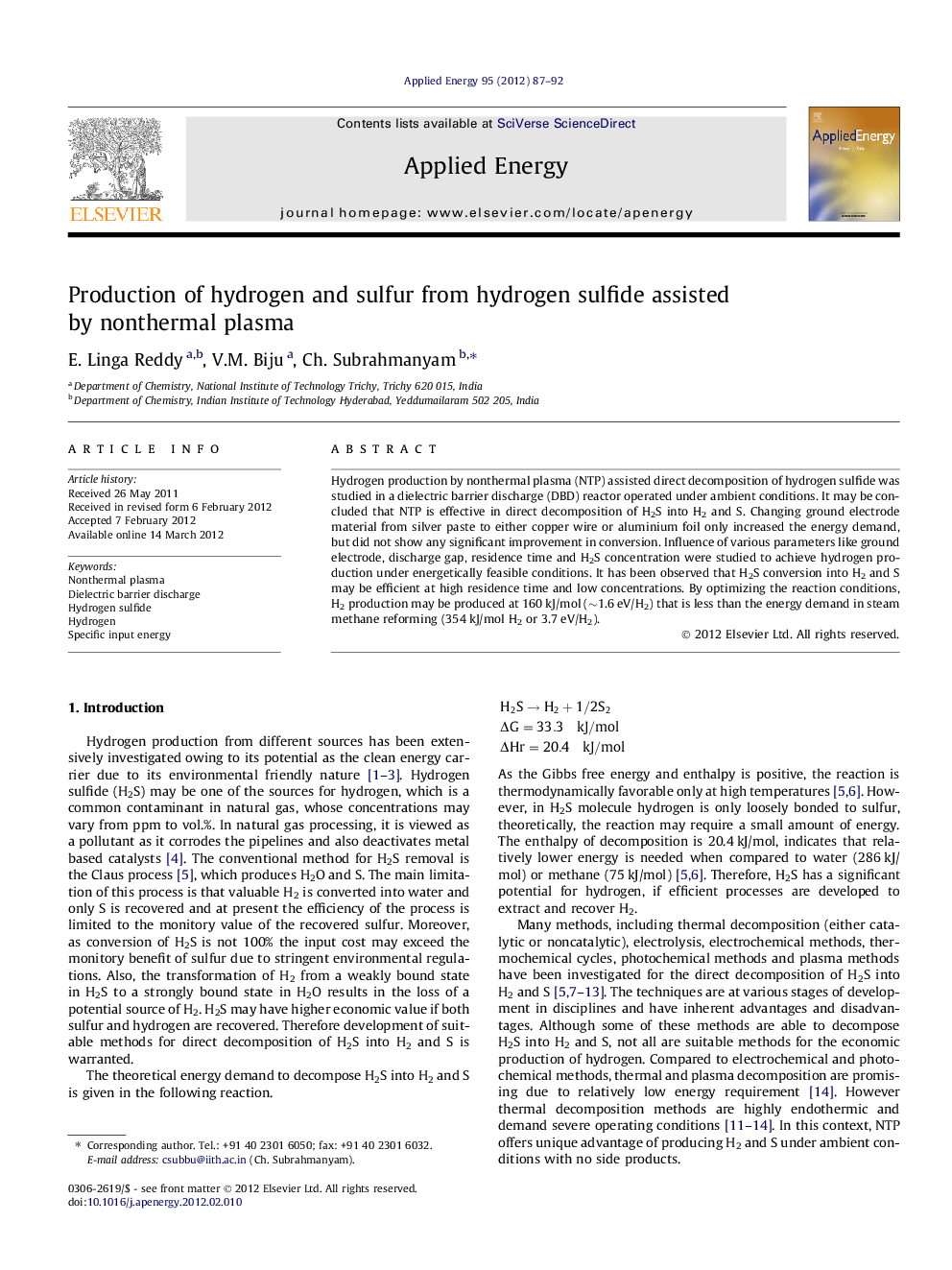| Article ID | Journal | Published Year | Pages | File Type |
|---|---|---|---|---|
| 243677 | Applied Energy | 2012 | 6 Pages |
Hydrogen production by nonthermal plasma (NTP) assisted direct decomposition of hydrogen sulfide was studied in a dielectric barrier discharge (DBD) reactor operated under ambient conditions. It may be concluded that NTP is effective in direct decomposition of H2S into H2 and S. Changing ground electrode material from silver paste to either copper wire or aluminium foil only increased the energy demand, but did not show any significant improvement in conversion. Influence of various parameters like ground electrode, discharge gap, residence time and H2S concentration were studied to achieve hydrogen production under energetically feasible conditions. It has been observed that H2S conversion into H2 and S may be efficient at high residence time and low concentrations. By optimizing the reaction conditions, H2 production may be produced at 160 kJ/mol (∼1.6 eV/H2) that is less than the energy demand in steam methane reforming (354 kJ/mol H2 or 3.7 eV/H2).
► Hydrogen from direct decomposition of H2S by NTP method has been developed. ► Influence of various parameters has been studied. ► H2S conversion was efficient at higher residence time and lower concentrations. ► By optimizing residence time, it is possible to achieve H2 production at 160 kJ/mol.
